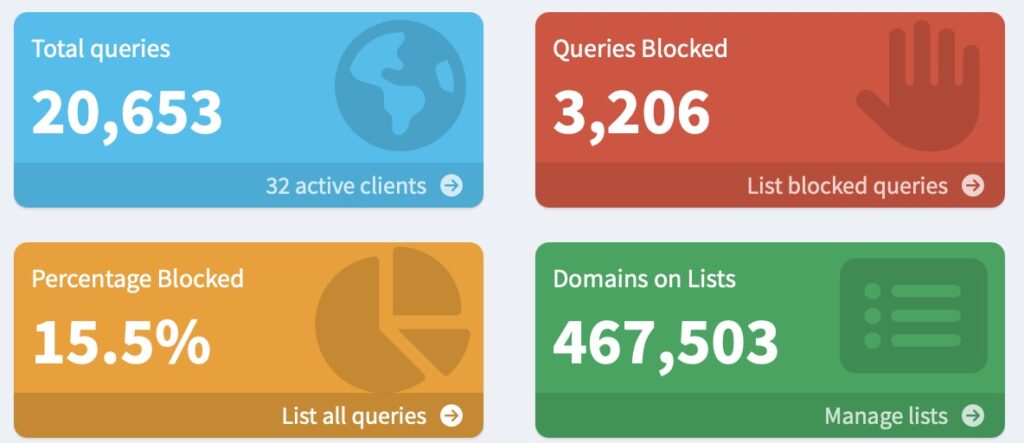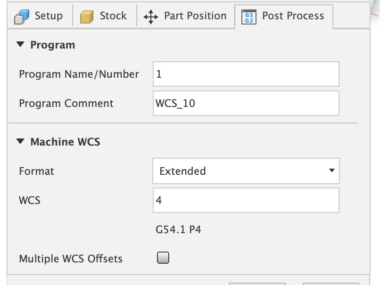The Internet is a Cesspool of Ads Rescued by a Pi-hole
The internet requires ad revenue to survive, and we all know this. Google and Facebook exist to serve ads. You are probably even paying money to watch ads on some video streaming service. It’s crazy, but people have done this from the dawn of entertainment. I grew up watching free TV over the airways with constant ad interruptions that heavily influenced the toys I wanted to buy in the 1980s. My family later paid for satellite TV that still sold us stuff, but at least I had a lot more choices of what to watch, without the power of when.
A Pi-hole is a network-wide ad blocking software. It does this by setting your router’s DHCP server to tell all the clients on the network to go through the Pi-hole for DNS queries, and blocking those that are for ads or other junk. A DNS server translates the human readable dub-dub-whatever-dot-com type of web address into a computer readable IP address number.number.number.number. The Pi-hole generally runs on a Raspberry Pi mini Linux OS computer and sends requests to ad hosts to an empty hole.
So I’ve been kind of complacent with ads, since they’ve been around my whole life for media-based things, but I have been running an “Ad Block” plugin in my Safari browser for many years. Plugins can only go so far, and I finally realized I should just install a pi-hole and see how much I like it. And I really really like it! But I also realize that ads support a lot of what I like doing for free (ie: web searching, reading news articles, this websites revenue), but……….it’s gotten too terrible. Too many websites have too many interruptions. Tubi has ads that are just repeated three times in a row! Programmers and ad-placers need to at least give the audience variety and not just pure repetition.
If everyone….or not even everyone, but say 50% of the home-network internet users installed a pi-hole it would probably break the ad-supported part of the internet (except YouTube). But it’s okay, because not that many people are tech savvy enough to get a pi-hole running on a Raspberry Pi…and if they are, they have to know how to change their network’s local DNS server…and also what lists to block…..and also how to turn it off when something isn’t working right…and also be motivated enough to actually set it up (that was me for years).

I am astonished about how many queries are blocked by the Pi-hole. Over 15% on average!! That is crazy. The internet has really gotten a bunch of junk on it, consuming wasteful bandwidth for silly things.
I’ll admit: before the pi-hole I did forward a few DNSs to 127.0.0.1 via /etc/hosts just to avoid a few major ad spammers, but it is nice to not have to do that anymore.
YouTube? Yeah, still has ads. They cracked down on adblockers a while ago and send all their ad queries through youtube.com, so you can’t block them via DNS. Ah well! I don’t mind it too much, as my channel makes a few bucks via those things.
It’s pretty cool that my LG smart TV now has ads blocked in Tubi and Hulu. I’m paying for Disney+ ad-free…but I might switch to ad-supported and see if it works there too. I get Hulu via a legacy Spotify that I pay for, so it is a free-ish ad-on.
I spent $100 on a Raspberry Pi 4 Model B/2GB from pishop.us fully loaded (case, power supply, SD card). The utilization is light; so I could have gone with 1GB or even 512 of RAM and a much slower processor (My utilization is around 16% RAM, ~1.2% CPU). Yeah, people say a Pi-zero is fine…but they aren’t $10 anymore ($15+w), and you’d need a dongle for an ethernet hardwire (and SD and power and case). I might want to run HomeAssistant on the pi at some point — currently it is on a VM on my server — and I didn’t want my network to slow down…as *everything* would be going through it.






